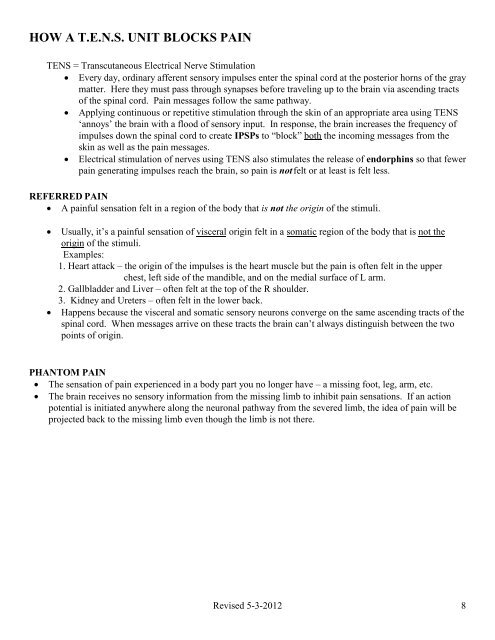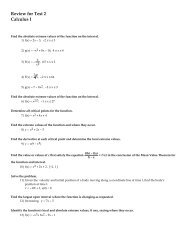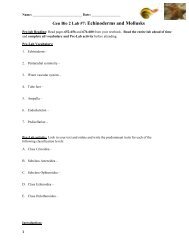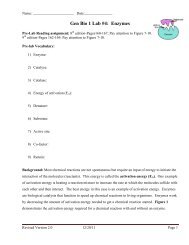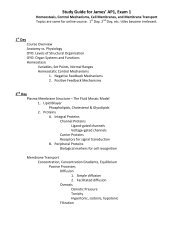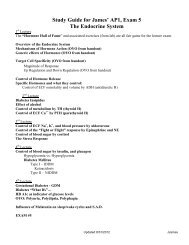You also want an ePaper? Increase the reach of your titles
YUMPU automatically turns print PDFs into web optimized ePapers that Google loves.
HOW A T.E.N.S. UNIT BLOCKS PAIN<br />
TENS = Transcutaneous Electrical Nerve Stimulation<br />
� Every day, ordinary afferent sensory impulses enter the spinal cord at the posterior horns of the gray<br />
matter. Here they must pass through synapses before traveling up to the brain via ascending tracts<br />
of the spinal cord. Pain messages follow the same pathway.<br />
� Applying continuous or repetitive stimulation through the skin of an appropriate area using TENS<br />
‘annoys’ the brain with a flood of sensory input. In response, the brain increases the frequency of<br />
impulses down the spinal cord to create IPSPs to “block” both the incoming messages from the<br />
skin as well as the pain messages.<br />
� Electrical stimulation of nerves using TENS also stimulates the release of endorphins so that fewer<br />
pain generating impulses reach the brain, so pain is not felt or at least is felt less.<br />
REFERRED PAIN<br />
� A painful sensation felt in a region of the body that is not the origin of the stimuli.<br />
� Usually, it’s a painful sensation of visceral origin felt in a somatic region of the body that is not the<br />
origin of the stimuli.<br />
Examples:<br />
1. Heart attack – the origin of the impulses is the heart muscle but the pain is often felt in the upper<br />
chest, left side of the mandible, and on the medial surface of L arm.<br />
2. Gallbladder and Liver – often felt at the top of the R shoulder.<br />
3. Kidney and Ureters – often felt in the lower back.<br />
� Happens because the visceral and somatic sensory neurons converge on the same ascending tracts of the<br />
spinal cord. When messages arrive on these tracts the brain can’t always distinguish between the two<br />
points of origin.<br />
PHANTOM PAIN<br />
� The sensation of pain experienced in a body part you no longer have – a missing foot, leg, arm, etc.<br />
� The brain receives no sensory information from the missing limb to inhibit pain sensations. If an action<br />
potential is initiated anywhere along the neuronal pathway from the severed limb, the idea of pain will be<br />
projected back to the missing limb even though the limb is not there.<br />
Revised 5-3-2012 8


